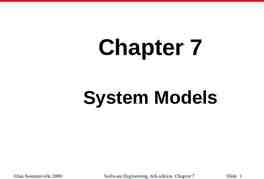Developing a Laboratory Ventilation Management Program for UVM
8 Slides304.00 KB
Developing a Laboratory Ventilation Management Program for UVM
Balancing Safety, Energy Use and Adaptability (Plan: Lab Design) Project Managers External Stnds Proposed UVM design criteria (Do: Hood Use) Laboratory Workers Continuous Education, mitigation of turn over User signals and training (Check: Cost Accounting) Upper Management Labs- 35% of campus steam approx. 2 mill./yr 2,000/hood/yr & approx. 400 on campus w/ 10%g.r. (Act: Maintenance) Campus Facility Managers Current Maintenance Hood user oversight services Other Institutional Success Normalizing Wedge
General Oversight Program ANSI Standard Z9.5-2003 This standard could be the basis for a continuous improvement approach to campus hoods oversight to realize energy conservation while improving safety
The “Plan” Stage: Lab Design External standards – Fire Protection: NFPA 45 – Containment: ASHRAE 110 – Energy Use: LEED and Labs-21 Proposed UVM design criteria – Hoods must pass ASHRAE As Installed (0.1 ppm leakage at 4 liters/minute); passing face velocity must be specified at installation – Energy conservation by design: basis of design document must describe design features (occupancy sensors, sash sensors etc.) and be made available to Environmental Safety staff to be translated to users
The “Do” Stage: Hood Use 40% workforce turnover every 2 years; surveys show only about 25% of the campus hoods are in use at any one time. User signals and training: 1. 2. 3. 4. 5. Tell tales to determine if the hood is on Warning signs in first 6 inches of hood Close the sash reminder poster Hood specific information on the side of the hood Clear labeling of any operational issues: occupant sensors, down times, etc.
The “Check” Stage: Cost Accounting Laboratory buildings at UVM represent about 35% of campus steam use or about 2 million per year Each hood represents about 2000/year in energy costs (this estimate varies by a factor of 10 depending on the source) GHG impact: one fume hood is the energy equivalent of about 3 houses – There are 400 fume hoods on campus with 10% more being added in the next two years – UVM’s fume hoods have a similar ghg footprint to the town of Underhill
The “Act” Stage: Maintenance Hood user oversight services: face velocity check, calibration of alarms and controls, preventive maintenance of fans and hood components, repairs, renovations with system adjustments Currently, maintenance of hoods is spread among at least 6 different shops, creating significant confusion for users and support people alike Retro-commissioning model at Cornell Technical support team approach at McGill
Next Steps Underway Plan: 10% more hoods to be added in next 2 years, at least half will be low flow. Low flow is of marginal energy benefit in single hood labs They are more important in multiple hood labs Do: Environmental Safety is developing user training based on hood tell tales and signage system Check: Development of campus GHG plan Re-Act: Review of Cook hoods this summer













